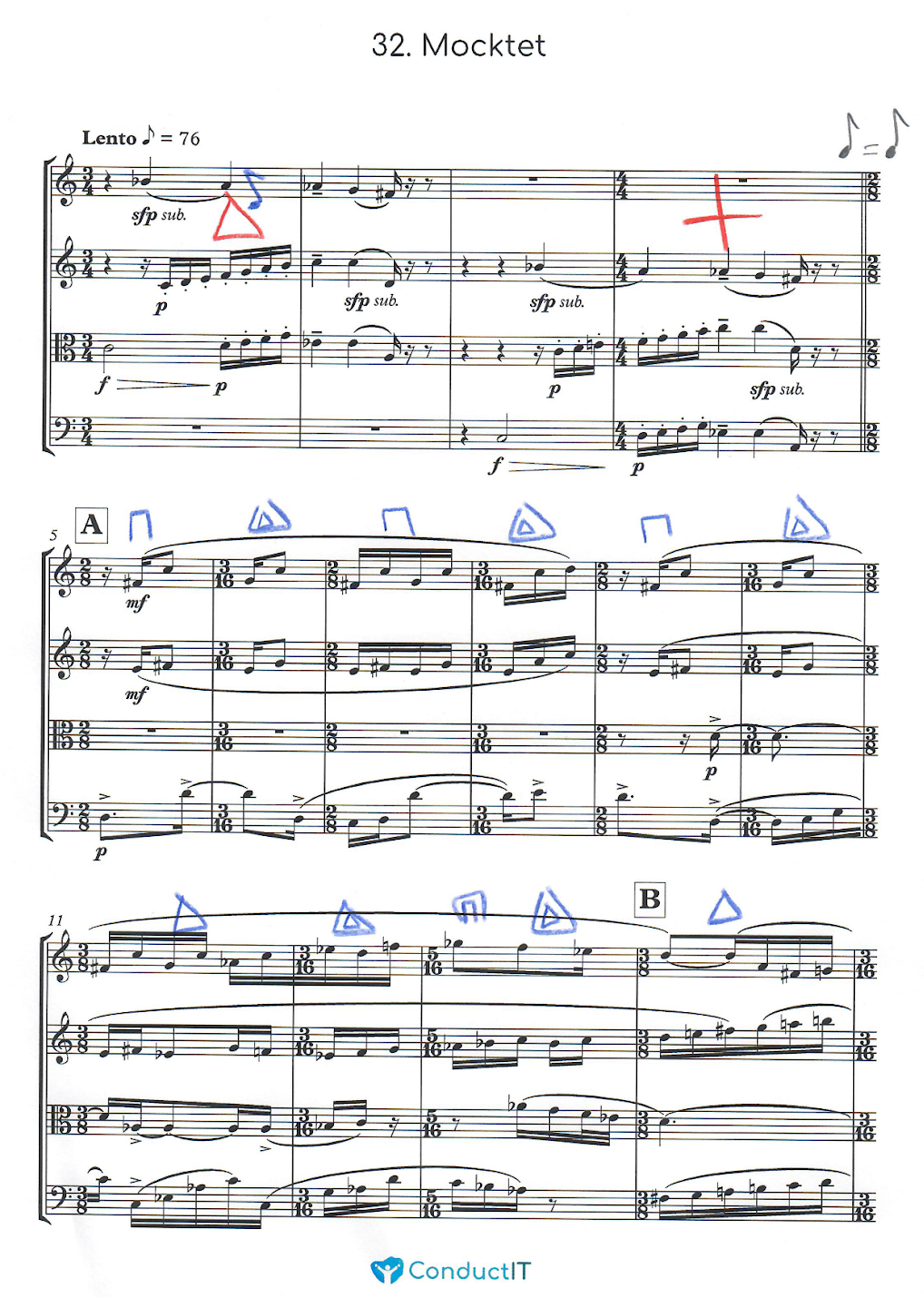4.4.1 Mixed Meter Examples
In our next extract, the meter changes are from 6/8 to 3/4 in Bernstein’s famous America from West Side Story. Watch out for the two places where the time signature doesn’t alternate – the bass line will give you a clue to this and once you’ve worked it out, why not use the system above to mark up the score.
Otherwise, much of the advice in section 4.3 also applies here. Your preparatory beat could be a dotted quarter, or two quarters – 2,3 of a 3/4 measure. Either should work well. Try to make the beats of the 3/4 measures smaller than the dotted quarters of the 6/8, in order to maintain a uniform speed of motion.
Bernstein
Film
Bernstein
Downloads
You may be able to detect the influence of a composer already mentioned in this chapter in the following extract! Unfortunately his estate denied our request for permission to arrange some short extracts by him, but this specially composed piece will help you prepare for conducting that music.
This is challenging to conduct, so don’t worry if you find it difficult at first. This is certainly a score you might want to consider marking up. Figure 6 shows a suggested approach:

A really good way to practise mixed meters is at your desk with a metronome, set to the lowest common denominator that works for all the measures. In this case, the metronome is at a sixteenth note pulse of 160 (most people conduct the piece this excerpt is based on a little quicker than notated). This allows you to practise going over the 2/8 & 3/16 transitions. Here’s how to do it:
Note the following points, and then watch it again:
- beating for the first four measures is in eighth notes as the quarter note pulse would be very slow, and there is a more logical connection to measure 5 onwards if the beat stays the same
- we will look more closely at subdividing in the next chapter but for now, note how the “big” 3/4 pattern is still apparent – the second part of each beat is much smaller
- you might also notice how the downbeats are slightly different depending on the pattern. In the 2/8 measures the “one” comes down slightly to the conductor’s right because the next beat is coming back up; in the 3/8s it comes down slightly to the left because the next beat will travel to the right; in the 3/16s it is fairly vertical. Doing this means the musicians can get a sense of the time signature even from the first beat in the measure
- although clarity of the meter is paramount, there is still also scope to indicate dynamics and articulation – a lot of complex mixed meter music suffers from the fact that everyone is so concerned with the rhythms that they forget everything else
Now move on to work on the whole excerpt, applying those same principles. A couple of further points to note:
- for the 5/16 at measure 13, you need to decide whether to beat 2+3 or 3+2. Sometimes the notation will make that very clear one way or the other, but in this case (as is very typical with Stravinsky) either option is possible. In some situations your decision might be made on the basis of some players or sections needing your help more – therefore help them. All other things being equal, the long beat coming at the end of the bar is often easier for the ensemble. So in this case we would suggest 2+3, following the beaming of part 1 instead of part 2
- At measure 31 carry on beating eighth notes, but you might want to change to quarters at 36
Mocktet
Film
Mocktet
Downloads